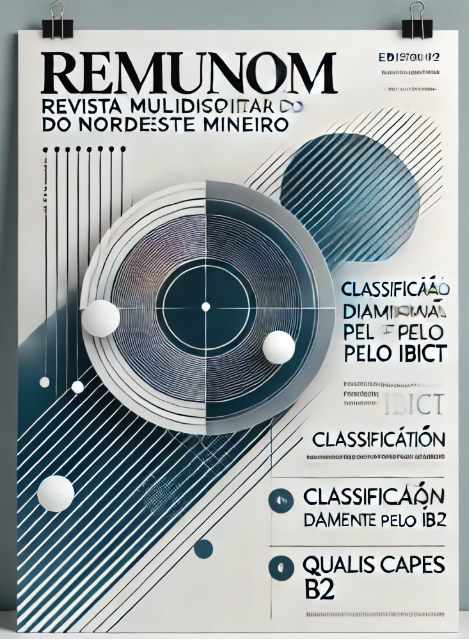A MASTURBAÇÃO E A ESTIMULAÇÃO SEXUAL COMO FACILITADORES DO TRABALHO DE PARTO
DOI:
https://doi.org/10.61164/rmnm.v9i1.3973Keywords:
Labor. Sexual stimulation. Humanized childbirthAbstract
Childbirth is an intricate physiological process, regulated by hormonal, emotional and neurological relationships, in which oxytocin is one of the main hormones responsible for inducing and maintaining uterine contractions. In view of the growing desire to seek non-pharmacological alternatives that provide a more natural and humanized birth, this research aimed to investigate, based on recent scientific research, how masturbation and sexual stimulation can function as facilitators of labor. The investigation was carried out through a qualitative analysis, with bibliographical research of scientific sources published in the last ten years in the areas of obstetrics, human sexuality and physiology of childbirth. The research was conducted in databases such as SciELO, PubMed and LILACS, giving priority to materials with scientific evidence and practical relevance. The findings indicated that practices such as orgasm and nipple stimulation promote the release of oxytocin and endorphins, helping to accelerate contractions and relieve pain. Furthermore, explanations from pregnant women and health professionals indicate that these practices can provide relaxation, strengthen emotional bonds and a sense of control during the birth process, in line with the principles of humanized childbirth and women's autonomy. Although there is still prejudice on the subject, the results reinforce the importance of considering sexuality as a significant dimension in obstetric care, with the potential to expand the care alternatives available to pregnant women. This study also highlighted the need to overcome cultural and institutional barriers so that evidence-based practices can be incorporated in an ethical, safe and respectful manner in the context of childbirth.
Downloads
References
Silva, M. A., & Santos, R. P. (2022). O papel da ocitocina no processo do trabalho de parto: aspectos hormonais, neurológicos e emocionais. Revista Brasileira de Obstetrícia, 38(1), 45–52. https://doi.org/10.1590/0034-728020220001
Trindade, T. T. C. (2021). Sobre parir e ver parir: Estudando partos naturais através de uma perspectiva antropológica das técnicas (Dissertação de mestrado). Universidade Federal de Santa Catarina. Disponível em https://repositorio.ufsc.br/bitstream/handle/123456789/229145/PASO0546D.pdf?sequence=-1&isAllowed=y
Marchiori, S. (2022). Sexualidade de mulheres durante a gestação: abordagem considerando as questões de gênero e disfunções. Revista da ABRASEX, *(1)*, 57–70. Disponível em https://www.abrasex.com.br/wp-content/uploads/2022/09/Revista-da-Abrase-n-1-leve-FINAL.pdf#page=57
McAdow, M., Athens, Z. G., & Son, M. (2022). Intrapartum nipple stimulation therapy for labor induction: A randomized controlled external pilot study of acceptability and feasibility. American Journal of Obstetrics and Gynecology MFM, 4(2), 100575. https://doi.org/10.1016/j.ajogmf.2022.100575
Downloads
Published
Issue
Section
License
Copyright (c) 2025 Revista Multidisciplinar do Nordeste Mineiro

This work is licensed under a Creative Commons Attribution-NonCommercial-ShareAlike 4.0 International License.
Autores que publicam nesta revista concordam com os seguintes termos:
- Autores mantém os direitos autorais e concedem à revista o direito de primeira publicação, com o trabalho simultaneamente licenciado sob a Licença Creative Commons Attribution que permite o compartilhamento do trabalho com reconhecimento da autoria e publicação inicial nesta revista;
- Autores têm autorização para assumir contratos adicionais separadamente, para distribuição não-exclusiva da versão do trabalho publicada nesta revista (ex.: publicar em repositório institucional ou como capítulo de livro), com reconhecimento de autoria e publicação inicial nesta revista, desde que adpatado ao template do repositório em questão;
- Autores têm permissão e são estimulados a publicar e distribuir seu trabalho online (ex.: em repositórios institucionais ou na sua página pessoal) a qualquer ponto antes ou durante o processo editorial, já que isso pode gerar alterações produtivas, bem como aumentar o impacto e a citação do trabalho publicado (Veja O Efeito do Acesso Livre).
- Os autores são responsáveis por inserir corretamente seus dados, incluindo nome, palavras-chave, resumos e demais informações, definindo assim a forma como desejam ser citados. Dessa forma, o corpo editorial da revista não se responsabiliza por eventuais erros ou inconsistências nesses registros.
POLÍTICA DE PRIVACIDADE
Os nomes e endereços informados nesta revista serão usados exclusivamente para os serviços prestados por esta publicação, não sendo disponibilizados para outras finalidades ou a terceiros.
Obs: todo o conteúdo do trabalho é de responsabilidade do autor e orientador.






